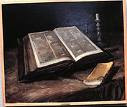
“Beauty of whatever kind, in its supreme development, invariably excites the sensitive soul to tears.” Edgar Allan Poe
The battle concerning what truly is the nature of art and beauty continues to rage in universities, galleries and salons designed for those who claim an artistic sensibility. What is beauty? Can it be defined? As the great American poet, Emily Dickinson, once wrote, “Beauty is not caused. It is.” When first exploring these questions, I discovered as many opinions as there are lovers in the world, and all think themselves an authority not to be gained said. It is possible that we will never know exactly what beauty is. Never the less, like a neurotic fixation, this question has haunted me over many sleepless nights.
In my quest for beauty, and I feel the journey could well be an endless one, I came upon a curious movement that seemed to ring of a semblance of truth. It was a certain sensibility, a philosophy of life and art, a literary and artistic wave, culminating in the 1890’s – Aestheticism. For the Aesthete, the quest for unadulterated beauty is recommended as the finest occupation humankind can find themselves during this short “visit” and “indefinite reprieve” from death that we have come to call life. The art of life or the life of art, the aesthete equates with a form of purified ecstasy that can flourish only when removed from the roughness of our stereotyped world of “actuality”. One of the most extravagant exponents of Aestheticism was the Irish writer, Oscar Wilde. He said that, “the seeker of beauty should never accept any theory or system that would involve the sacrifice of any mode of passionate experience” How true.
Closely associated with the Aesthetes was another curious artistic movement known as the Pre-Raphaelite Brotherhood. Such forgotten luminaries as Holman Hunt, John Everett Millais and Dante Gabriel Rossetti founded the PRB in 1848. My personal favourite painter of the later period of this movement is John William Waterhouse. A close net group of art students, painters and poets, they revolted against the canons of the English Royal Academy, and dedicated themselves to recovering the purity of medieval art which Raphael and the Renaissance had destroyed. Inspiring even today, they turned their backs on the realities of the 19th century Industrial society and anticipating Symbolism, merged classic form with the dream world of myth, spirituality and the human imagination.
Any conservative or stalwart of the classical persuasion will tell you that the “death” of art occurred after German Expressionism. This is quite possible considering the work of the Abstract Expressionists.
Be that as it may, the Pre-Raphaelite artist were amazingly proficient in depicting vividly, naturalistic detail, that the Australian art critic described as “…spectacular, beautiful in patches and coldly, provokingly weird in others, sometimes both at once.”
For me, their work provokes uncannily, moods of dreamy melancholy. There is a painful yearning of sentimentality in the work combined with a cold realism that is sometimes quite frightening.
Edward Burne Jones, the dreaming aesthete who cared for Beauty, almost single-handedly brought the English aesthetic movement into existence. His work was the exact opposite of Realism. In a conversation with Oscar Wilde, he rhetorically asked, “Realism? Direct transcript from nature? What does that have to do with art?” Indeed the growing abstraction in his work began to upset some important benefactors at the time. But he didn’t care – Burne-Jones’ quest for beauty continued into the realms of the imagination, attempting to remove the vulgar roughness from the stereotypical world of actuality.
As fashion changes so too does artistic sensibility. However over the last ten years or so, the work of the Pre-Raphaelites are becoming more popular. The art critic Robert Hughes speculates, “Modernism is losing its mandate in our fin de siecle.” I would venture to say the reason painting this century is losing its mandate was its never ending preoccupation with form, lacking in that certain quality the Romantics attempted to explore and strive towards – the Divine.
In an effort to describe what Edward Burne-Jones was striving for in his work, he wrote the following diary entry:
“I mean by a picture a beautiful romantic dream of something that never was, never will be – in a light better than any light that ever shone – in an land no-one can define, or remember, only desire – and the forms divinely beautiful.”
If this is not actual Beauty, it is at least, in the quest alone, beautiful.
Note: The painting shown above is called “The Annunciation”, by Dante Gabriel Rossetti.
Craig Middleton


No comments:
Post a Comment